Lower Limb Conditioning
Injury prevention, May 07, 2021
Including exercises to strengthen your feet and lower legs is vital in avoiding injury, but also for improving your run performance. The faster you run the more stress you put through your lower limbs. Therefore if you want to run faster you need to make sure that your lower limbs are strong enough to deal with the stress.
These drills and other exercises are described below. We also have some video clips so you can see exactly what you need to do.
Your muscles are attached to tendons. You can think of a tendon as being a bit like an elastic band. These bundles of connective tissue run parallel to the muscle fibres through the muscle.
This means that in many athletic movements the force is produced not just from the muscle contraction but also from a release of elastic energy from the tendon.

During running, your Achilles tendon is stretched during the dorsiflexion phase of the ankle movement (ie when your toes pull up towards your leg). Elastic energy is stored in the tendon during this stretch, which is then released when the Achilles shortens during push-off.
So your calf muscles control the movement of the ankle with an eccentric (lengthening) contraction during the dorsiflexion (shock absorbing) phase, while your Achilles tendon then releases energy while it shortens to plantarflex the ankle and push off the ground.
Using this stored energy means that the muscles can get away with doing less work, and so you run more efficiently.
Everyone’s tendons are different with regards how much energy they are able to store and release. The good news is, there are things you can do to improve this and become more economical.
Having strong feet, ankles and lower legs means that you will be able to control your running technique. Injuries to the foot, ankle and Achilles are often brought about by excessive movement in the ankle and foot.
For example if you over-pronate (ie your foot rolls in too much) you may end up with achilles problems or shin splints. Strengthening your feet and lower legs can help prevent this.
If you do much running off road, then these exercises will also help you avoid spraining your ankle on uneven ground.
Start off with these simple exercises to build up your strength:
Calf raises: Stand with your weight evenly on both feet, push up onto your toes and then lower. Repeat this as many times as you can manage until your calves start to feel uncomfortable. Have a rest and repeat another 2 times. Count how many repetitions you manage and try to increase this gradually.
To progress this you can do them on one foot, do them with a weight, or stand on a slope (toes higher than heels) or on the edge of a step to increase the range of movement.
Eccentric Exercises: Eccentric calf exercises are great for strengthening your calf muscles and your achilles tendon (see 'curing and prevention achilles injury page for more detailed information).
Exercises:
- Stand on the edge of a step with your toes and the ball of your foot on the step and your heels hanging off the step
- Then go up onto your toes using both feet
- Lift one foot off the step
- Lower down on your other foot
- Repeat.
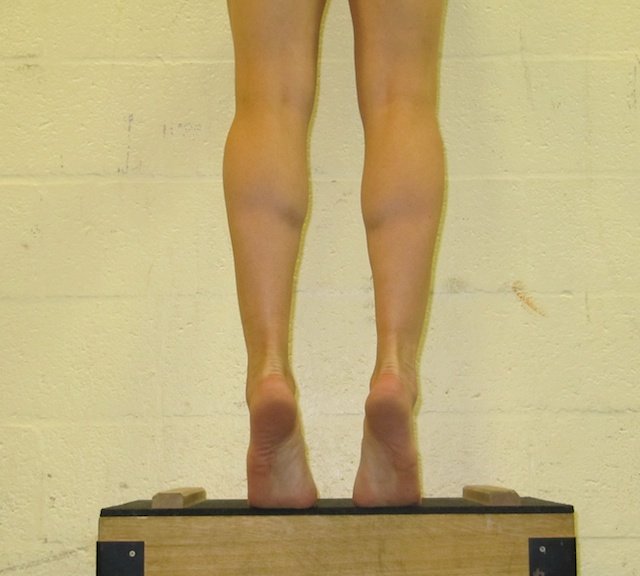 |  |  |  |  |
As well as doing this with a straight leg, do it with your knee slightly bent, and with your leg bent change the angle of your foot, so you do some facing straight forward, and some with your foot pointing left and then right, so you get a different angle.
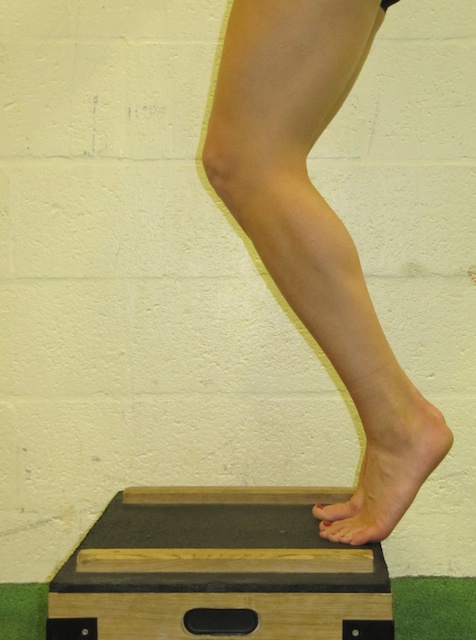 | 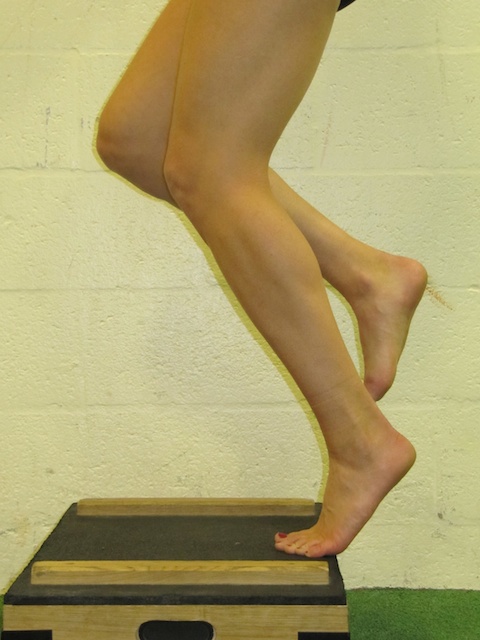 | 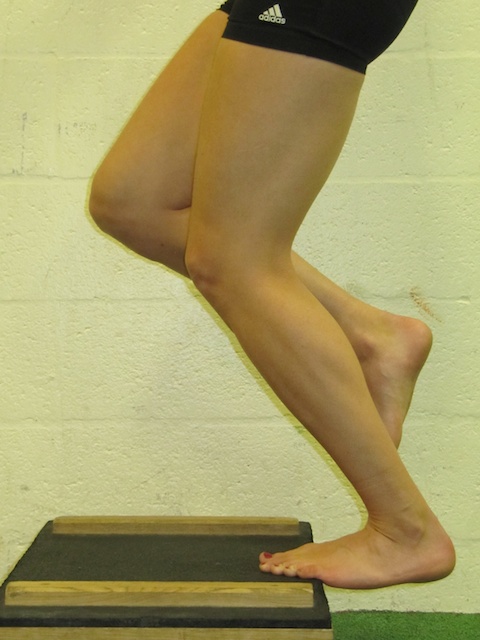 | 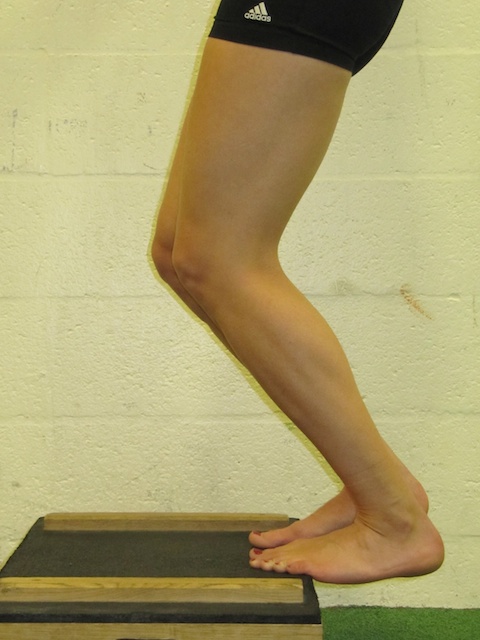 |  |
Moving On To Slightly More Dynamic Exercises:
These two walking exercises work your calves in a more dynamic way and this means you have to control the movement through your ankle as well as just move up and down.
The video below demonstrates these exercises. Start without a weight and then if you have access to a barbell you can start doing these with added weight.
If you don't have access to weights you could wear a backpack with books, or even do these exercises walking uphill.
Dynamic Exercises - Drills For Speed Training:
These drills were originally done by sprinters as they improve the reactive strength and power of the lower limb. However these are also excellent for endurance runners and now many of the top distance runners and triathletes include these drills in their training.
They help improve fatigue resistance and reduce the risk of injury by strengthening the lower limb.
Work on the exercises above first before moving on to these more dynamic drills for speed training. When you move on will depend on how much of the above you have done before. Generally 2 – 4 weeks of doing the above exercises 1 – 3 times a week will be enough.
A good guide is when you are able to progress on to do more of the above and not feel any soreness or tightness in your muscles the next day.
The video below demonstrates these drills for speed training. They cover a range of different hopping and skipping exercises.
